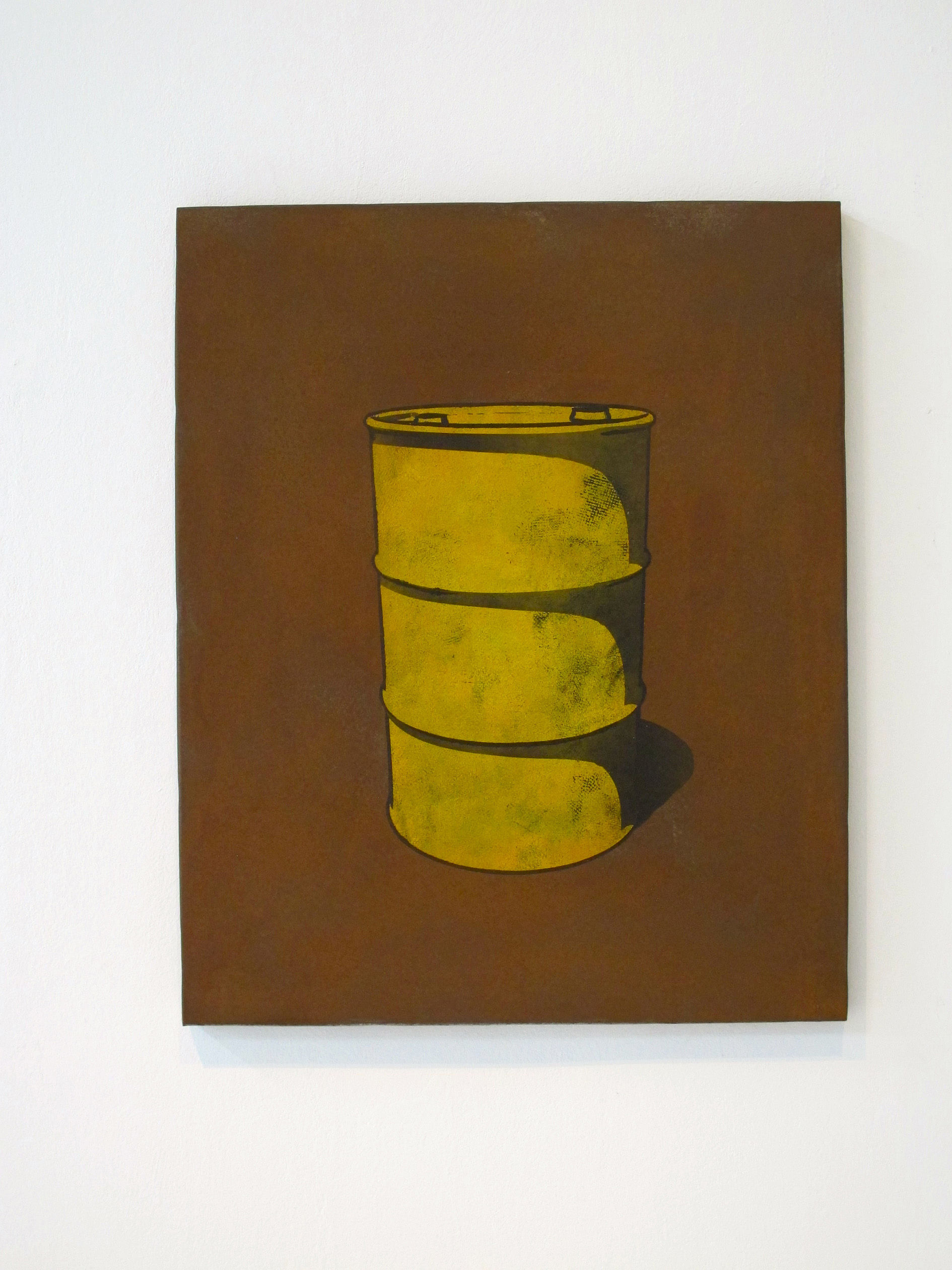Timely Manoeuvres brings together 13 renowned international artists with their contemporary works using various media and methods, from knitting to installation to paper-cutting. With the theme of time, most of the works provoke reflection of how the dimension of time is portrayed in the artworks.
Where: Ikkan Art Gallery, 01-05 Tanjong Pagar Distripark, 39 Keppel Road MRT: Tanjong Pagar When: Till June 27, noon - 7pm (Tue - Sat), closed on public holiday Admission: Free Info: ikkan-art.com/timely-manoeuvres
Lim Min Zhang
1 SERIES 133651 LATTICE A & C, 1990

One of Japan's foremost sculptors and installation artists, Miyajima fills a dark room with 20-digit numbers. They jump in an erratic manner, counting away on their own.
The number zero, which signifies finality and irrevocability, never appears, to show that life moves in a cycle. Such an idea stems from his Zen Buddhism beliefs.
2 MARBLE PLATE, 2009

The Chinese artist typically explores traditional Chinese forms in different settings to effect social change, such as Safe Sex (1986), a People's Liberation Army-issued raincoat with a condom attached to its front, drawing attention to the Aids epidemic at that time. This reference to a traditional Yuan-dynasty plate is disrupted from its usual purpose through a simple adjustment. With the idea of subversion playing a large role in his work, it leaves the viewer guessing at its political implications.
3 UNTITLED, 2007

This is part of the Dutch artist's ongoing two-decade series that explores the relationship of abstraction from the photograph to the painting. Using her own photograph of a view from a windscreen, it is not clear what the faded structures in the background are. This is to show that things get lost in perception in the translation to painting. Other works in the series often depict landscapes that are usually bleak and never feature people, yet are strangely comforting because they are familiar sights in her native country.
4 STEEL DRUM #3, 2014

Steel is Kato's material of choice throughout his career and this interest came from his job at a metal processing company when he was starting out as an artist.
The meaning and purpose of the material in society are questioned when Kato uses it in unfamiliar ways such as constructing an entire traditional Japanese tea room using steel (Steel Tea Room "Tettei", 2012).
The canvas itself is made of steel and the ageing process is incorporated into the work, as the colours and texture will change over time.
5 ST LOUIS, 1982

The American sculptor is famous for his site-specific sculptures, which are always located in a public space, sometimes disrupting human traffic.
This work, the first out of 75 pieces, was made in commemoration of Serra's public sculpture Twain (1982) in downtown St Louis in the United States.
The sculpture is the same shape, but with eight 10-feet-high steel plates, instead of paintstik on paper. The simple shape is composed dynamically, in line with the artist's minimalist leanings.
6 RAFT, 1994

Three jackets of the same material (mylar) are slotted into the blanket, giving the work a balanced, circular composition.
The jackets were knit as a tribute and elegy to Herring's friend, drag queen and playwright Ethyl Eichelberger, who committed suicide in 1990 while suffering from Aids.
The delicate semi-transparency of the mylar gives the feeling of ghostliness and absence, providing a shape but not a structure.
7 BIG BODY 2, 2013

The process of cutting to Ozeki is like the drawing process - no planning comes before the cutting on the single sheet of paper.
His fascination with television noise inspired him to create works made up of seemingly patternless and inconsequential bits which detail his inner thoughts and feelings.
The ebb and flow of the small cuts in Big Body 2 appear erratic and random, yet when combined, give a pleasing abstract flow of humanity.
8 MIRACLE (I-VIII), 2001

Mori explores the Buddhist state of "alaya" consciousness, of being in a present that coincides with the past and future. This work stands out from her earlier one in the 1990s, which used more contemporary media (photography) and subjects (cyborg). The round disks with pink hues and reflective surfaces surround surreal and fantastical objects, which could be micro-organisms or large objects in space, and is deliberately ambiguous.
This allows the viewer to question his or her own perspective, because one could be looking out at the universe or into a microscope.
